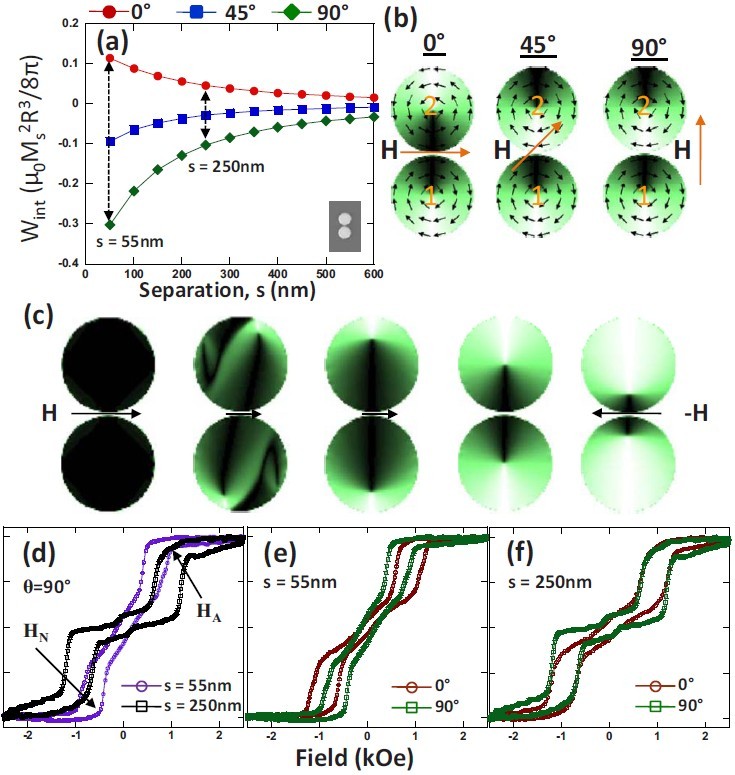Nanomagnetism The last decade has seen great interest in the magnetic and transport properties of low dimensional magnetic films. Apart from being an excellent experimental means for studying fundamental magnetic phenomena, these low dimensional magnets may in the future form the basis of new information storage and computing technologies. Magnetic nanostructures, by virtue of their extremely small size possess different properties from their parent bulk material. Magnetization reversal mechanisms can be drastically modified in nanostructures confined to sizes that preclude the formation of domain walls.
 From an application viewpoint, patterned nanomagnets form the building blocks for various magnetoelectronic devices. A major challenge for technological applications incorporating magnetic nanostructured arrays is the precise control of the magnetic switching processes. The key issue is to control the magnetic properties of individual and interacting elements at reduced dimensions for tailor made magnetic devices. We have conducted extensive investigation of the magnetic properties as a function of geometrical parameters such as shape, size, film thickness and structure. From an application viewpoint, patterned nanomagnets form the building blocks for various magnetoelectronic devices. A major challenge for technological applications incorporating magnetic nanostructured arrays is the precise control of the magnetic switching processes. The key issue is to control the magnetic properties of individual and interacting elements at reduced dimensions for tailor made magnetic devices. We have conducted extensive investigation of the magnetic properties as a function of geometrical parameters such as shape, size, film thickness and structure.
- We have explored extensively, the use of in-plane anisotropy of elongated nanorings to control the magnetic states in ferromagnetic rings. We have also conducted systematic investigation of how the magnetic properties of the array can be strongly affected by magnetostatic coupling when rings are placed close to each other.
- We have conducted extensive investigations of the magnetization reversal processes in Ni80Fe20 nanowires. Our systematic studies of the effect of the various geometrical parameters show that the magnetization reversal mechanism is strongly influenced by the thickness of the nanowires. We observed a cross-over from a coherent dominated reversal mode to curling magnetization when the thickness to width ratio exceeds 0.5. We have also exploited the thickness dependence of the coercive field to create arrays of pseudo spin valve (PSV) nanowires.
- We have conducted a systematic and extensive investigation of the magnetic properties of array of uniformly sized Co dots as a function of various geometrical parameters such as size and thickness. We established a phase boundary between the reversal mechanism dominated by single domain spin rotation and vortex mediated reversal.

Further readings:
- A. O. Adeyeye and N. Singh, Invited Topical Review “Large Area Patterned Magnetic Nanostructures”, J. Phys. D: Appl. Phys. 41, 153001(2008).
- S. Jain, A. O. Adeyeye, and N. Singh, Nanotechnology 21, 285702 (2010)
- S. Jain, Y. Ren, A. O. Adeyeye and N. Singh Physical Review B 80, 132401 (2009)
- D. Tripathy, A. O. Adeyeye, N. Singh and R. L. Stamps, Nanotechnology 20, 015304 (2009).
- A. O. Adeyeye, S. Goolaup, N. Singh, C. C. Wang, X. S. Gao, C. A. Ross, W. Jung, F. J. Catsano Journal of Physics D: Applied Physics 40, 6479 (2007).
- J.Wang, A. O. Adeyeye, and N. Singh, Applied Physics Letters, 87, 262508 (2005);
|

